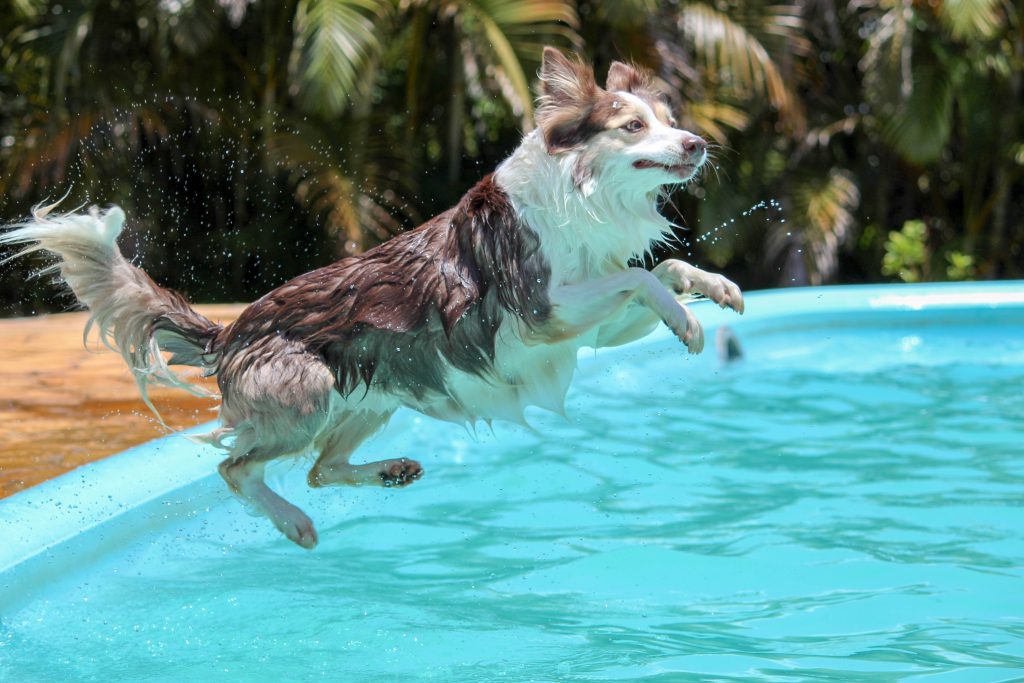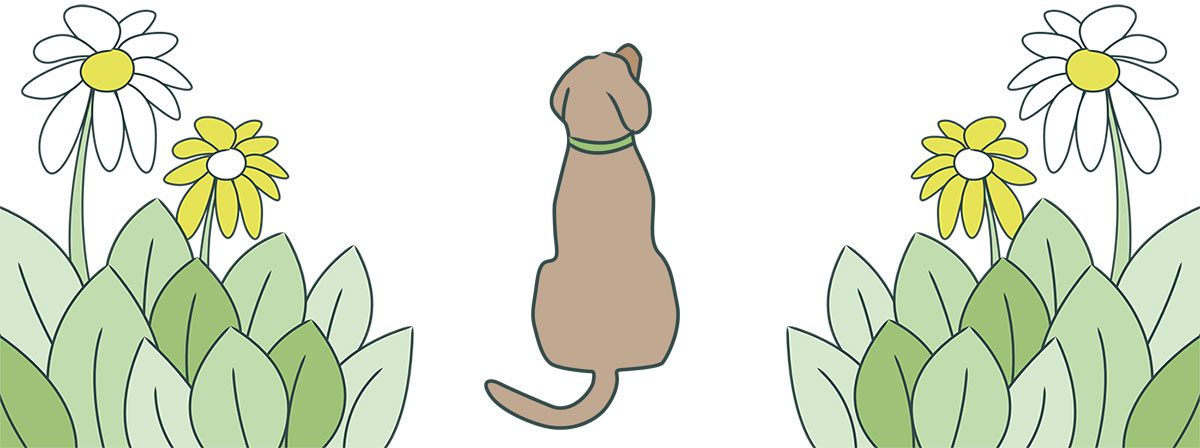With lockdown lifting and the summer setting in, it’s probable that you’ve started to venture out of the garden and back into the big wide world with your pooch for some fun in the sun. Summer is everybody’s favourite time of year; but there are hidden dangers in summer you need to be aware of.
Overheating
We’re becoming increasingly aware of the dangers of overheating, but vets still have to treat dogs that have become ill in the heat.
Unlike us, dogs don’t sweat, so it’s much harder for them to cool off properly. Whilst some breeds cope well in the heat, others were bred for colder climates and struggle with the heat more finding it no fun in the sun. Dogs pant to cool down, blowing cool air over the inside of their mouths; but dogs that struggle to pant effectively can find this difficult. In particular, brachycephalic (flat-faced) dogs struggle to cool down in the heat.
Avoid heatstroke
Avoiding heatstroke is by far the easiest way to ensure that you don’t end up heartbroken. You should think about the air temperature and coat thickness as well as nose shape and colour of your dog when planning any activities. Don’t walk in the heat of the day- early morning and evening are better for fun in the sun. If, for any reason, you miss the morning walk- don’t risk taking them out once the sun is hot.
It won’t kill your dog to miss a walk for once- make sure they get out to the toilet and give them brain games and puzzles to do indoors instead, then take them for a longer walk once it’s cooler. Dogs die in hot cars, true- but dogs also suffer in any warm, enclosed space. Polytunnels, greenhouses, cars, and even rooms and garages can become unbearably hot for your dog, so think carefully if leaving your dog alone.
Water

If you do take your dog out for fun in the sun, make sure they have plenty of water. Despite what the myths circulating the internet would have you believe, ice is safe for your dog- as long as they’re not already suffering from heatstroke and as long as they don’t inhale them. You can even make dog ‘ice lollies’ by freezing water, kibble and treats to make a cold snack for your dog. It’s a great way to keep them well hydrated, too. You should also provide your dog with suitable shade. Some dogs aren’t very sensible about seeking shade when they need it, so be prepared to put your dog in the shade if they are too busy trying to be a part of the fun.
Signs of overheating
Lastly, it’s a good idea to know the signs of overheating so that you can act quickly if necessary. Panting, drooling, shaking, lethargy, and collapse are some of the most common signs. If you’re worried that your dog is overheating you should phone your vet immediately- it could save their life.
Sunburn
Did you know that dogs get sunburned, too? Whilst many dogs are protected by their fur or colouration, some dogs are prone to getting sunburn. White dogs have less protection from the sun and are more likely to burn, especially where the hair is thin- such as on the ears. West Highland White Terriers, Jack Russel Terriers and Chihuahuas are all prone to burning thanks to their fine coats. It’s also sensible to take care if dogs have recently been clipped for surgery, as the area will be unprotected. The best defence is to apply sun cream, just as you would for people. Take care to find an animal-friendly sun cream, as many human creams contain zinc and are not designed to be groomed off and swallowed. Your vet can advise if you’re concerned.
Summer Poisons
With your garden in bloom, it is easy to forget that some plants are toxic to dogs. Since we often let the dogs roam around the garden unattented, it’s a good idea to check which plants are possibly harmful. If your dog is young, or the type to eat anything and everything, you might decide to remove the plants altogether. For older and more sensible dogs, knowing what is where and what signs might develop if they were to eat some is a good idea. The Dogs Trust has a fantastic list of known poisonous plants available here.
Garden chemicals
Don’t forget that it’s not just plants you need to be careful of. Fertilisers and weed killers can be toxic too. Be sure to store well out of reach and read the label carefully. Pesticides can also be toxic, and many contain imidacloprid. Be especially careful if you have a collie or collie-type dog, as they are very sensitive to poisoning with these drugs.
Barbeques
Another common garden danger in summer is barbeque food. When we eat outdoors, we’re more likely to eat sitting on the floor. Our bins are usually bags hung over the back of a chair, and we have fewer countertops to prepare food. In other words, our food is much easier for your canine companions to reach. Watch out for cocktail sticks and kebab sticks, which can cause serious damage if swallowed. Hot food can also cause burns in the mouth. Cooked bones shouldn’t be given to your dogs under any circumstances. And lastly, corn-on-the-cob may seem like a good chew treat, but unfortunately cannot be digested and causes severe, life-threatening blockages.
Remember, your vet is there to help this summer. Despite everything, they’re open for advice and emergencies- so if you need them, please don’t hesitate to ring.

